
Content marketing has seen a lot of changes over the past few years, in particular around the way that marketers have went about actually developing their content. A lot of this has come down to the rapidly evolving search engine landscape, as well as a huge shift in the way that people are discovering content.
All that said, I still hear the same pain points coming from content producers that I did over five years ago:
"I struggle to measure the ROI of the content I create."
"We create great content but we still don’t seem to rank high in Google for our target keywords."
"So, I’ve done my keyword research. Now what?"
As a response to these problems -- in particular the second one -- a lot of marketers will respond with increased content output. Unfortunately, creating larger volumes of the same underperforming content will often result in the same underwhelming results -- just at a greater expense.
The answer to these problems spans way beyond the number of blog posts being pushed out each week; the real problem lies in the way that most content strategies are being developed.
The Search Engines Are Changing
Updates to the way that the search engines are processing and evaluating content have been tied heavily to the approaches that content publishers have been taking to get results.
One of the ways in which content producers will evaluate the performance of content is by looking at keyword rankings within the search engines. There’s been a lot of debate around the actual credibility of keyword rankings as a metric, and the reason for this largely stems from the fact that rank changes depending on context.
To put it simply, depending on how and where you’re searching from, you’ll see different search results.
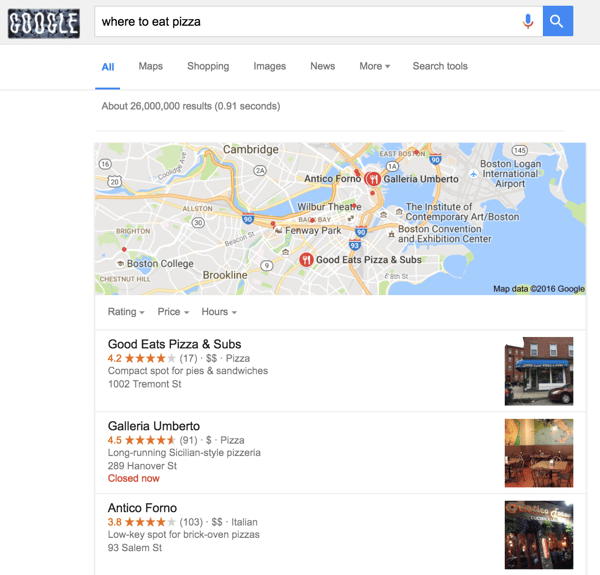
A simple search for the term, “where to eat pizza” illustrates this perfectly. If you’re searching for this query from Boston then you’ll receive a completely different set results compared to someone searching in San Francisco. In fact, the results page for this query probably has thousands of different variations at any one moment in time.
With this in mind, how do you accurately determine your ranking for this keyword?
Outside of keyword ranking problems, the search engines have also been dictating how content should be structured, most notably with the increased appearance of featured snippets.
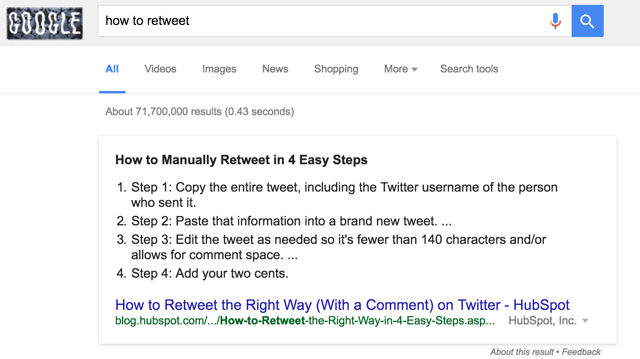
Google has been rolling out more and more featured snippets within the search results that try to answer the question that the searcher has without needing to navigate through to the content.
The reality is that content ranking within the featured snippet section often gets a much greater share of the traffic for the given query when compared to non-featured snippet SERPs.
Publishers now have to restructure their content to try and appear within these featured snippets, of which Wikipedia reigns supreme -- owning an estimated 17.2% of all featured snippets.
On a more general level, Google in particular has been making big investments in machine learning and has introduced ‘RankBrain’ into the core algorithm it uses to index and rank content. Ultimately, RankBrain enables Google to better understand the intent behind specific queries without the search query explicitly stating them -- all with the goal of providing more relevant results to the searcher.
This leads nicely onto the next big change in search: the searcher.
The Searcher is Changing
More significant than the way in which the search engines themselves are evolving is the way that the searcher is communicating with the search engines.
Amplified by the rise of mobile and voice search, queries have become more and more conversational. Google’s updates over the past 2-3 years have focused on understanding these types of queries better through natural language processing, most notably with the rollout of Hummingbird.
Google’s CEO, Sundar Pichai, announced in May that that 20% of queries on its mobile app and on Android devices are voice searches.
The takeaway here for marketers? The traditional view of ‘keywords’ in search has changed. Where there were maybe 10-20 ‘big keywords’ that would be sought after for ranking within a topic, there are now hundreds or thousands of long-tail variations that are regularly searched within a topic.
Content Strategy in 2017 and Beyond
Considering the advancements in the ways that both the search engines are evolving and the way that searchers are communicating with them, there needs to be a shift in the way we align our content strategies -- especially if organic search is a channel you’re focused on.
The way that we approach this at HubSpot is to look at our visibility across a topic, as opposed to a specific keyword. Through building content within topic clusters, we’re able to capture a large amount of search traffic across an ever-increasing pool of relevant keywords/phrases, as well as creating a strong affinity of a topic against our brand.
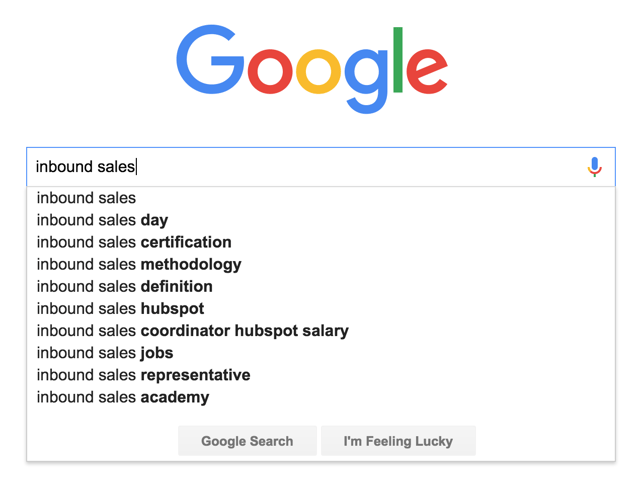
A great example of this is around “inbound sales," an area that we’ve been covering a lot. You can see from Google’s autocomplete section that there’s a number of big links into HubSpot -- our Inbound Sales Day, Certification, and Methodology being the top three, as well as a direct mention of the HubSpot brand.
We’ve managed to align our brand against huge volumes of topics that directly relate to our buyer personas, and as a result we generate millions of relevant visits to our web properties.
What is a Topic Cluster?
The basic premise behind building a content program in topic clusters is to enable a deeper coverage across a range of core topic areas, whilst creating an efficient information architecture in the process.
That sounds more complex than it is in reality.
What I’m saying here is that through aligning sets of webpages into topic clusters, you can manage the internal linking between each more efficiently and also provide a better user experience for visitors.

Building a solid information architecture is incredibly important for ranking well in organic search across a broad topic area. Creating hyper-focused clusters of content geared around a specific topic will not only help solve for that, but it’ll enable you to keep focused on creating content that your buyer persona actually cares about.
The typical way that I structure a topic cluster of content is with one larger piece of content that focuses around broadly covering the core topic, otherwise known as pillar content. Linking into the pillar content is a range of content that covers individual, more specific subtopics, otherwise known as cluster content. The cluster content will link back to the core pillar and often in between other cluster content within the same topic.
Here’s an example to illustrate this:
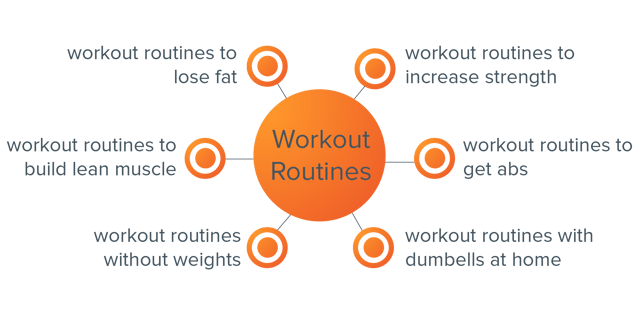
In the above example, the core topic is “workout routines.” Each of the surrounding subtopics focuses on a more specific branch of the core topic, for example, “workout routines to build lean muscle”.
The role of the pillar content is to cover the core topic broadly and also perform well at converting visitors into leads (or whatever your conversion goal is). The cluster content that is built for each of the subtopics will focus on gaining greater topic visibility and funneling traffic through to the pillar content in order for them to convert.
The beauty of this model is that you can spend a lot more time optimizing your pillar content for conversions and your cluster content for traffic. This saves a lot of time on the traditional model of optimizing each individual post. It also makes it easier for you to give a positive user experience whilst sending a bunch of positive signals to the search engines.
More time and resources are often spent on pillar content than on the supporting cluster content. Due to the fact that they’re all interlinked, all of the content within any given topic cluster will receive a boost when one page performs well.
An example of pillar content that we’ve produced at HubSpot would be our Blog Topic Generator tool.
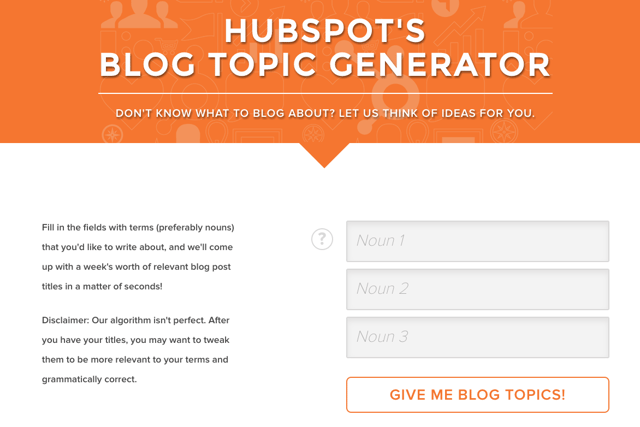
This pillar content brings in a substantial amount of new leads every month and gets a heap load of traffic. Tools work particularly well for pillar content because they’re often evergreen content and get shared a lot.
We’ve built out a wide range of cluster content that ties into specific subtopics. An example of this would be our blog post titled, “How to Think Up a Year's Worth of Blog Post Topics in an Hour,” which has an internal link pointing to the Blog Topic Generator tool.
This content will drive traffic to the pillar content and push positive link signals to the search engines in the process, increasing both the organic search visibility and leads generated from the overall topic cluster.
The Process for Creating a Topic Cluster
When it comes to actually mapping out topic clusters, there’s a general process that I’ve found to work particularly well. I’ve simplified it down and listed it below so that you can get started:
- Map out 5-10 of the core problems that your buyer persona has (use surveys, run interviews, and do some secondary research within online communities).
- Group each of the problems into broad topic areas.
- Build out each of the core topic with subtopics using keyword research.
- Map out content ideas that align with each of the core topics and corresponding subtopics.
- Validate each idea with industry and competitive research.
- Create, measure, and refine.
This is a very simplistic overview but can work as a light framework for prioritizing content ideation and production. I tend to find that actually visualizing each topic group into topic clusters works particularly well.

How to Measure the Success of Your Topic Cluster
One of the most common content marketing questions that I’m asked is, “how do I measure the success of a piece of content?”
The answer to this question is complicated because for the most part it’s not a great idea to evaluate the success of your campaign on a content-by-content basis. Just looking at the success of one blog post is difficult at the best of times, but more often than not the definition of success is too narrow to account for indirect benefits that it has.
A good example of this would be with more brand-driven content. The focus here isn’t around generating sales or even capturing email addresses, but instead it can be around elevating the brand, attracting new talent, or even earning backlinks/press coverage.

If we based the success of our “Our Story” page on the number of leads it generated, it would be performing terribly. On the flip side, this page has over 5,000 backlinks from external websites and gets a huge amount of traffic from potential hires looking to join our company.
Luckily, this problem can be solved by evaluating success on a topic cluster level instead.
Measuring the entire topic cluster against all of your core business metrics will enable you to include residual benefits coming from content that doesn’t align with direct conversion goals. Let’s say one of your blog posts is a study with a bunch of original data that gets thousands of backlinks -- this page will pass on authority across all the pages in the topic cluster and grow the search visibility across the whole topic cluster. That’s difficult to measure in isolation, but can be done on a topic cluster level.
Using this framework for measurement, you’ll be able to understand the following:
- Which topics perform better at driving traffic to your web properties
- Which topics earn you the most leads
- Which topics drive the most revenue to the business
- Which topics earn the most backlinks/coverage
Search Engines Aren’t Searching for Your Content, People Are
What this all works towards is ensuring that you’re actually creating content that people want to see, as opposed to content that’s designed specifically for the search engines. Don’t forget, search engines are pretty smart. In most cases, they don’t require you to ever mention a specific keyword in the copy of your content to understand that it’s relevant.
Shifting your focus to building content on a keyword-by-keyword basis and moving to owning topics is going to help you create better content, increase your visibility in the search engines and provide a much more positive experience for visitors.
What questions do you have about this framework? Share them in the comments below.

from HubSpot Marketing Blog http://blog.hubspot.com/marketing/topic-clusters
No comments:
Post a Comment